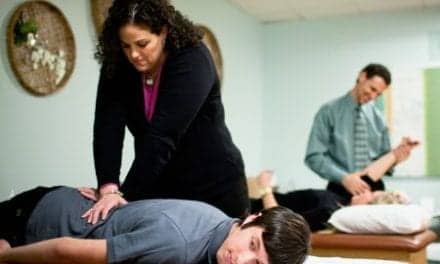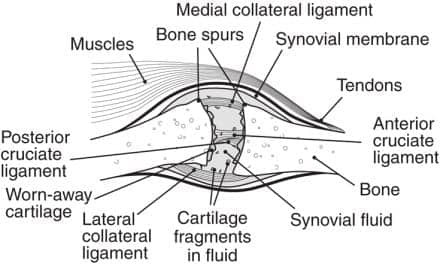
It is extremely important for fitness consumers to recognize their own limitations and understand the potential risk of injury associated with any high-level activity. Injuries can occur to even the most experienced individuals.
by Jeff Yellin, DPT, CSCS, USA-W, ART, and Arielle Prince, PT, DPT
Fitness and weight loss programs are some of the hottest, up-and-coming trends for teens and adults in the United States. According to Marketdata Enterprises, a firm that researches niche industry trends, Americans spend more than $60 billion annually on weight loss. This includes everything from gym memberships/weight loss program fees, to drinking diet soda.1 This fixation on exercise and fitness makes the weight loss industry one of the most lucrative in the world.
Americans, despite being obsessed with body image and dieting, are generally not up to par with the Centers for Disease Control and Prevention (CDC)’s Physical Activity Guidelines for aerobic physical activity levels. Only 49.2% of adults 18 years of age and older in the US meet these requirements, and an even lower 20.8% of adults meet the guidelines for both aerobic and muscle strengthening activity requirements.2 These surprisingly low statistics contribute to the explanation as to why obesity is such a concern in this country. According to the CDC, the percentage of adults 20 years and older with obesity is 37.9% and the percentage of adults who are overweight, including obesity, is 70.7%.3 These alarming health statistics have motivated some of the general population to seek out different weight loss options, including high-intensity, trendy fitness programs such as CrossFit, Insanity, and P90X.
CrossFit, along with many other functional strength training programs available, has dramatically increased in popularity in recent years. Although exercise in general, as a trend, is a positive change for America’s typically sedentary culture, certain questions arise as to the qualifications of those instructing these classes, and a concern for the safety of those participating. The US Bureau of Labor Statistics (BLS) reports that while there are several different paths one may take to become a personal trainer, certification and post-secondary education programs are the most common, although not always mandatory.4
Although certified personal trainers may be preferred by employers, group fitness instructors can begin work without certification.4 Some training programs only require the prospective instructor to spend a few days learning material, whereas others require more than 2 years of study and practice. This will naturally create large discrepancies between the skill sets of instructors within the personal training community. Consequently, untrained individuals are able to participate in a weekend course and continue on to instruct a client about anything from simple equipment use to a high-intensity exercise, likely without the knowledge of proper form or mechanics. It can be assumed that the lack of proper intensive training during some of these courses contributes to higher rates of injury.
Fitness programs such as CrossFit offer their own guidelines and levels of instructor training in order to improve the quality of those instructing their clientele. Still, injuries can and do occur. In a recent study published by Journal of Strength and Conditioning Research, researchers surveyed 132 CrossFit athletes, and found that 73.5% of those participants had reportedly sustained an injury. Of the reported injuries that either prevented them from working, training, or competing, about 7% required some form of surgical intervention. Interestingly, the rate of injury found within this CrossFit study was similar to injury rates found in sports such as Olympic weight lifting, power lifting, and gymnastics, with shoulder and spine injuries being the most commonly reported by participants.5 Surprisingly, though, this rate of injury is also similar to that of a general fitness workout, so it is difficult to truly state whether CrossFit contributes any more risk of injury than a typical strength and conditioning program.
CrossFit classes are generally made up of participants with a wide range of athletic ability, all performing the same complex overhead movements such as snatches or clean and jerks. With such a wide range of clientele, there is a high likelihood that not everyone’s technique will be perfect. The lack of proper form with such complex movements, coupled with limitations in mobility or comorbidities, can increase the risk of injury in these classes.
As such, it is extremely important for fitness consumers to recognize their own limitations and understand the potential risk of injury associated with any high-level activity. Injuries can occur to even the most experienced individuals. Many people who classify themselves as exercisers will admit that they have hurt themselves at one point or another. It is this combination of factors that makes CrossFit injury rates less surprising. If you do find yourself among the vast array of injured fitness participants, there are different ways to rehabilitate your issue and prevent recurrence of injury.
Shoulder and Back at Risk
Shoulder and back injuries are the most common among fitness training participants. Understanding what is needed during rehab and how to prevent recurrence is of paramount importance. Proper warm-up and stretching are vital in injury prevention. A quick and easy way to warm up is on a bike. Most gyms or fitness facilities provide access to stationary bikes, which are many times underutilized. A bike is a great way to heat up the muscles and prepare them for the exercise to follow. Bikes are not only great for cardio, but they are also low-impact tools for rehabilitation. They provide a way to elevate heart rate and increase blood flow to the muscles without the stress of additional weight-bearing on the joints. Bikes are also used as a stepping stone toward using an elliptical machine and later a treadmill. This method of progression allows for a steady increase in impact as well as an increasing tolerance to resistance. Once a person is ready to progress to running, intervals are the key to prevention of reinjury. Intervals allow for the body to adapt to the stresses of running without overuse of the muscles.
General stretching should always be performed in conjunction with a warm-up. At first, static stretching for specified directions of motion are utilized and performed. Stretches for the upper trapezius, posterior capsule, internal rotation, latissimus, and external rotation are most important for the proper functionality and mobility of the shoulder. Similarly, stretches such as those for the hamstrings, iliotibial band, quadriceps, and hip flexors are important for back or lower extremity injuries. Once a person has improved their flexibility and mobility, they can then progress to utilizing more of a dynamic warm-up.

As many injuries come from the lack of coordination, mobility, stability, and strength of the musculature being stressed, it is important to progress from lighter resistance to higher resistance, in order to allow the muscles to adjust to the stresses that were introduced.
Tools for Injury Prevention
Other tools commonly used in rehabilitation of injury include: therapeutic elastic bands and exercise balls, which can be used to gently progress patients through an exercise program. Their affordability also makes them something clients can buy for use at home to keep self care programs moving forward. Foam rollers, too, provide similar utility at home and in the clinic, and are easy enough to use for clients to use post-workout for myofascial release. Resistance machines and free weights are also part of the toolbox for working with this patient population. As many injuries come from the lack of coordination, mobility, stability, and strength of the musculature being stressed, it is important to progress from lighter resistance to higher resistance, in order to allow the muscles to adjust to the stresses that were introduced. For example, a person should not start out at the gym performing a deadlift if they have never done any type of squatting previously.
Professional Physical Therapy utilizes these concepts, not simply to rehabilitate a patient from an injury, but also to teach patients how to avoid future injury. In many cases, the practice will transition patients who have achieved their goals in the physical therapy setting into more advanced programs at Professional Athletic Performance Center (PAPC). At PAPC, athletes are given the tools to further rehabilitate their injuries under the supervision of certified athletic trainers and strength and conditioning specialists. This guidance helps them continue to strengthen, while focusing on maintaining proper form and mechanics, so the athletes can return to sport as safely and quickly as possible.
Whether one is returning to exercise after an injury, beginning a new exercise regimen, or participating in a high-intensity training program, it is always important to keep one’s capabilities and limitations in mind. While it is easy to place blame for injuries on the training programs as a whole, the fault may lie within a tandem of poorly qualified instructors and underprepared participants. Having the proper guidance and supervision, as well as the tools to self-assess and progress, are the best ways to maintain safety and prevent future injury. RM
Jeff Yellin, DPT, CSCS, USA-W, ART, is partner and regional clinical director, Long Island and Queens for Professional Physical Therapy, headquartered in Uniondale, NY. Yellin is an NSCA-certified strength and conditioning specialist, and certified in Active Release Technique for the upper and lower extremity. He earned his doctorate from Stony Brook University. His specialties include working with the overhead throwing athlete and rehabilitation of the shoulder, as well as strength and conditioning work with athletes to assist them with return to play after an injury or surgery. His treatment experience ranges from the sedentary, to the weekend warrior, to professional athletes in the NHL, MLB, NBA, and UFC.
Arielle Prince, PT, DPT, is a physical therapist at Professional Physical Therapy’s Melville location on Long Island. She earned her bachelor’s degree in health and exercise science from Syracuse University. She subsequently earned a doctorate of physical therapy. Prior to joining her current employer, she gained experience during her clinical rotations in subacute, outpatient, geriatric, and pediatric orthopedic populations. She has a particular interest in the treatment of spinal disorders and injuries. For more information, contact [email protected].
References
1. Marketdata Enterprises Inc. Market & Industry Studies. Available at: http://www.marketdataenterprises.com/studies/#WORKSITEWEIGHTLOSS. Accessed September 2, 2016.
2. Centers for Disease Control and Prevention. National Center for Health Statistics. Exercise or Physical Activity. Available at: http://www.cdc.gov/nchs/fastats/exercise.htm. Accessed September 2, 2016.
3. Centers for Disease Control and Prevention. National Center for Health Statistics. Obesity and Overweight. Available at: http://www.cdc.gov/nchs/fastats/obesity-overweight.htm. Accessed September 2, 2016.
4. Bureau of Labor Statistics. Occupational Outlook Handbook. Fitness Trainers and Instructors. Available at: http://www.bls.gov/ooh/personal-care-and-service/fitness-trainers-and-instructors.htm. Accessed September 2, 2016.
5. Hak PT, Hodzovic E, Hickey B. The nature and prevalence of injury during CrossFit training. J Strength Cond Res. 2013 Nov 22. [Epub ahead of print]. Available at: http://journals.lww.com/nsca-jscr/Abstract/publishahead/The_nature_and_prevalence_of_injury_during.97557.aspx. Accessed September 2, 2016.





